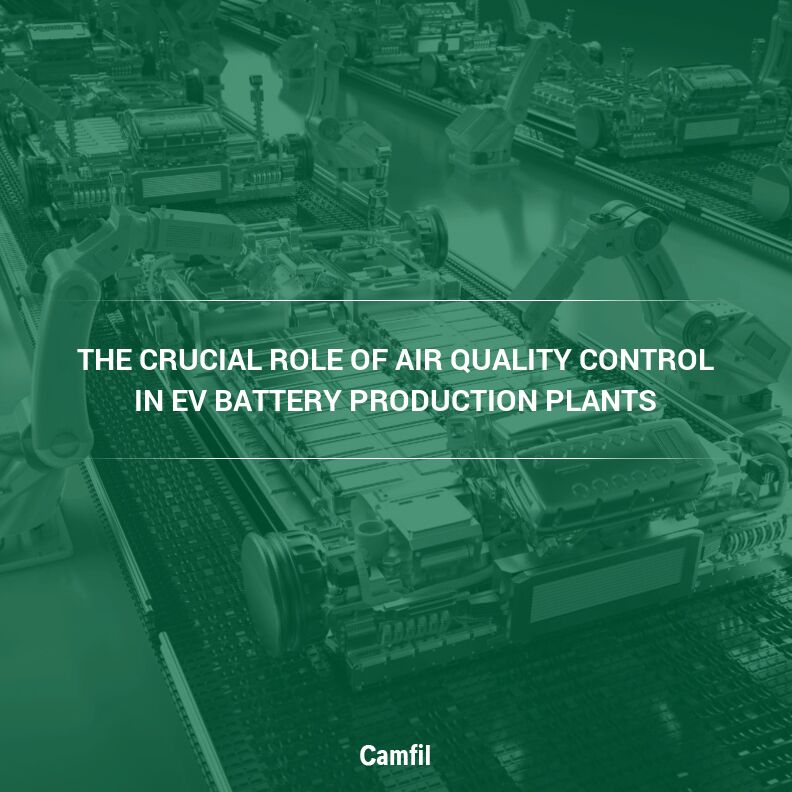
The Crucial Role of Air Quality Control in EV Battery Production Plants
17–20 minutes to read
Automotive manufacturers are constantly striving to improve fuel economy by using a variety of cutting-edge technologies aimed at reducing CO2 emissions and achieving performance targets. According to the U.S. Environmental Protection Agency (EPA), in model year 2023, the combined category of electric vehicles, plug-in hybrid vehicles, and fuel cell vehicles produced for sale in the U.S. reached 12%, up from 7% in 2022. Industry experts predict that this upward growth trajectory will continue as EV production rises in the coming years.
While EV progress is beneficial to reducing automotive emissions, the process of manufacturing EV batteries can generate harmful pollutants. Manufacturers must address air quality challenges to ensure they meet OSHA and EPA requirements and maintain proper cleanliness in manufacturing.
Air Quality Concerns in Lithium-ion Battery Cell Manufacturing
The majority of electric vehicles are powered by lithium-ion batteries. These batteries are composed of highly hazardous substances. The cathode is usually made from a combination of lithium, nickel, manganese, and cobalt, while graphite is used for the anode. Lithium salt serves as the organic solvent. The active materials in the battery electrodes, like graphite or lithium cobalt dioxide, are processed in a powdered state, which can produce sub-micron airborne particles.
The production of lithium-ion battery cells involves several steps, including the coating of anodes and...
Read Full Story: https://cleanair.camfil.us/2024/04/18/the-crucial-role-of-air-quality-control-in-ev-battery-production-plants/
Your content is great. However, if any of the content contained herein violates any rights of yours, including those of copyright, please contact us immediately by e-mail at media[@]kissrpr.com.